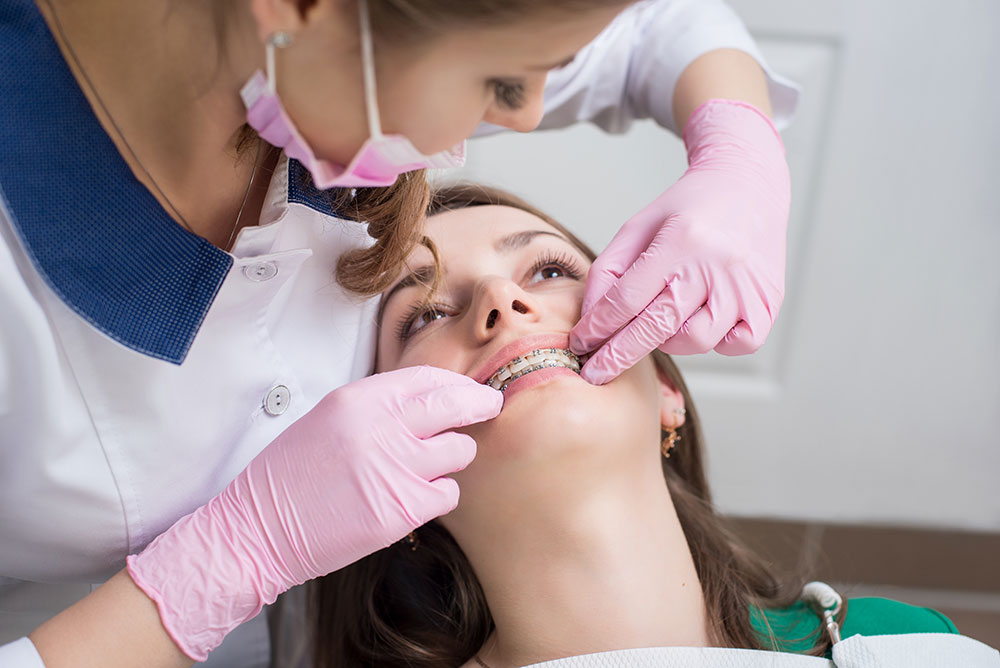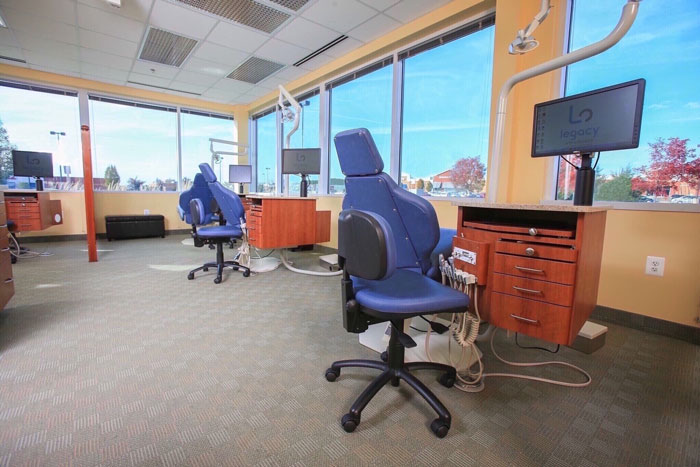Not known Facts About Legacy Orthodontics
Not known Facts About Legacy Orthodontics
Blog Article
Rumored Buzz on Legacy Orthodontics
Table of ContentsExamine This Report about Legacy OrthodonticsThe 6-Second Trick For Legacy OrthodonticsSome Known Details About Legacy Orthodontics The Definitive Guide for Legacy OrthodonticsTop Guidelines Of Legacy Orthodontics
At Advanced Orthodontics, we offer individuals with a all natural treatment experience. Additionally, we supply adjustable treatment schedules, adaptable payment options and an enjoyable, pleasurable experience. invisalign. Phone call ( 480) 357-4900 today to find out more and schedule a visit.An orthodontist is a dentist educated to identify, protect against, and deal with teeth and jaw abnormalities. They remedy existing conditions and are educated to identify troubles that may establish in the future. Orthodontists deal with people of any ages, from youngsters to grownups. People typically connect an excellent smile with health.
Malocclusion, or misaligned teeth, can result in dental issues, consisting of tooth decay, gum condition, and difficult or agonizing chewing. Not everybody is born with straight teeth. If you have a bad bite or huge rooms in between your teeth, you may want to get in touch with a dental expert concentrating on orthodontic care.
Unknown Facts About Legacy Orthodontics
( Picture Credit Rating: DigitalVision/Getty Images) Orthodontists make use of repaired and removable oral tools, like braces, retainers, and bands, to alter the position of teeth in your mouth. Orthodontic treatment is for oral problems, consisting of: Misaligned teethBite problems, like an overbite or an underbiteCrowded teeth or teeth that are too much apartJaw misalignmentThe objective of orthodontic therapy is to boost your bite.
A healthy and balanced bite ensures you can eat, eat, and speak correctly. While you may think about orthodontists as generally for children or teens that require dental braces, they can correct oral issues at any type of age. Orthodontists go to university, dental institution, and orthodontic college. After graduation, they spend 2 or 3 years in an orthodontic residency program.
, yet not all dentists are orthodontists. They concentrate on two areas: How to correctly and safely relocate teeth Exactly how to properly lead development in the teeth, jaw, and faceOnce an orthodontist has actually completed training, they have the alternative to end up being board accredited.
3 Simple Techniques For Legacy Orthodontics
Imbalance, or malocclusion, is one of the most common reason people see an orthodontist. It is hereditary and is the outcome of dimension distinctions between the top and lower jaw or between the jaw and teeth. Malocclusion leads to tooth congestion, an irregular jaw, or irregular bite patterns. Malocclusion is generally treated with: Your orthodontist connects steel, ceramic, or plastic square bonds to your teeth.
If you have just minor malocclusion, you might have the ability to utilize clear braces, called aligners, rather than conventional braces (https://hearthis.at/legacyortho/set/legacy-orthodontics/). Some individuals need a headwear to help relocate teeth right into line with stress from outside the mouth. After braces or aligners, you'll need to wear a retainer. A retainer is a custom-made gadget that maintains your teeth in location.
They can create additional space in the mouth without having to draw teeth. Orthodontists utilize cords, surgical screws, or plates to sustain your jaw bone.
You may need to see an orthodontist if you have: Crowding or otherwise adequate area for all of your teethOverbite, when your upper teeth come over your bottom teethUnderbite, when your bottom teeth are as well much forwardSpacing or concerns with gapsCrossbite, which is when your upper teeth fit behind your bottom teeth when your mouth is closedOpen bite or a vertical void in between your front bottom and top teethMisplaced midline, when the center of your base and top teeth don't line up Fixing an oral malocclusion can: Make biting, eating, and talking easierImprove the proportion of our face and your total appearanceEase discomfort from temporomandibular joint conditionsDifferent your teeth and make them much easier to cleanse, assisting prevent dental cavity or dental caries It's usually a dental expert that initially notices misaligned teeth throughout a regular exam.
The Greatest Guide To Legacy Orthodontics

During your first orthodontic assessment, you'll likely have: A dental examPhotos taken of your face and smileDental X-raysPanoramic (360 degree) X-rays of your face and headImpressions to create molds of your teethThese tests will assist your orthodontist know how to proceed with your treatment. invisalign. An orthodontist is a dental professional who's had training to treat your teeth and jaw
Orthodontists may carry out surgical treatment, exams,X-rays,and more to help you achieve a more comfortable, much healthier smile. An orthodontist is concentrated on your bite, so something like a damaged tooth would certainly be handled by a dental professional. Orthodontists are dentists yet not all dentists are orthodontists. Orthodontists are concentrated on your bite, or the means your teeth meshed, and the straightness of your teeth.
Ever wondered exactly how stars always appear to have perfectly straightened teeth? The answer typically lies in the proficient hands of an orthodontist. What exactly does an orthodontist do? Orthodontists are dental experts who concentrate on dealing with abnormalities in the teeth and jaws. Their knowledge goes past simply developing a beautiful smile; it prolongs to enhancing your overall oral health and function.
The 7-Second Trick For Legacy Orthodontics

, orthodontists have a diverse toolkit at their disposal. see this website These tried-and-true dental braces use a system of brackets bound to the teeth and linked by cords.
Clear aligners, like Invisalign, are a preferred alternative for people looking for a much more very discreet therapy alternative. These detachable trays are custom-made to gradually change the teeth's placement. Headwear might be used in combination with dental braces or aligners to use additional targeted forces, especially for dealing with jaw inconsistencies. In instances of slim jaws, palatal expanders can be made use of to produce room for proper tooth placement.
Report this page